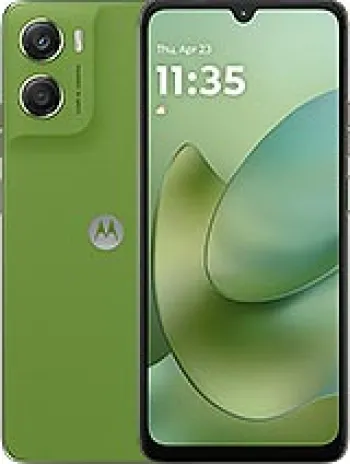
Introduction to Motorola C390
The Motorola C390 is a classic mobile device that was announced in the fourth quarter of 2004 and has since been discontinued. It was designed for basic mobile communication needs and represents a time when mobile phones were transforming from simple communication devices to multifaceted digital companions. In this article, we will delve into the various features and specifications of the Motorola C390, examining its design, network capabilities, display, memory, sound, communication features, battery life, and other notable characteristics.
Design and Build
The Motorola C390 is a compact device with dimensions of 107 x 44 x 20.9 mm and a weight of only 91 grams, making it a lightweight and portable option for users. It is built with a classic bar form factor and is available in two color options: Dark Blue Green Soft Feel and Dark Roast Black. The phone uses a Mini-SIM card and has a user-friendly layout that was typical of mobile phones in the early 2000s.
Network Capabilities
Equipped with GSM technology, the Motorola C390 supports GSM 900/1800/1900 bands, providing reasonable network coverage for its time. The device has GPRS Class 10 support, which allows for basic data services, although it lacks EDGE capabilities. During its release, the C390 was suitable for users looking for reliable voice communication and basic data connectivity.
Display Features
The display of the Motorola C390 is presented with a CSTN, 65K color screen, offering a basic visual experience. It has a resolution of 128 x 128 pixels and presents information across five lines. While the display does not have the same clarity or resolution as modern screens, it was sufficient for viewing text messages and basic graphical content.
Memory and Storage
The Motorola C390 comes with an internal storage capacity of 1.8MB, which may seem limited by today's standards but was typical for phones of that era. This storage supports a phonebook capability of up to 500 entries and can store records of 10 dialed, 10 received, and 10 missed calls. There is no card slot for memory expansion, making the internal storage capacity final and unchangeable.
Sound Options
The phone includes a loudspeaker and supports various alert types including vibration, downloadable polyphonic, and MP3 ringtones. However, it does not have a 3.5mm headphone jack, which limits private listening options directly from the device. The sound functions emphasize basic communication needs and customizable ringtone options to identify incoming calls and messages.
Communication and Connectivity
The Motorola C390 includes Bluetooth 1.1, allowing for wireless connection with other Bluetooth-enabled devices. However, it lacks modern WLAN capabilities and does not include features such as positioning services or a built-in radio. The phone uses a proprietary USB connection for wired connectivity, which was common in devices from that time.
Software and Features
The phone operates as a feature phone without an advanced operating system. It supports messaging formats such as SMS, EMS, MMS, and Email. The built-in browser supports WAP 2.0/xHTML for basic internet browsing. Users could enjoy pre-installed games like Football and Keepy Uppy, with additional downloadable games available. Java support is present, with MIDP 2.0, to enhance the device functionality somewhat within its limitations.
Battery Life
The Motorola C390 is powered by a removable Li-Ion 820 mAh battery. Its stand-by time can extend up to 275 hours, and talk time usage can last up to 5 hours and 50 minutes. The battery capacity reflects the lightweight and compact design of the phone, providing sufficient usage time for a day of standard communication.
Conclusion
The Motorola C390 is a testament to the early 2000s mobile phone era, reflecting the technological capabilities and consumer needs of that time. Despite its limited features compared to modern smartphones, it served as a functional device for basic communication and personal use. Its simplicity, coupled with sturdy design and battery efficiency, made it a popular choice among users seeking a straightforward mobile experience.
Key Features of Motorola C390
- GSM support with tri-band (900 / 1800 / 1900) network compatibility
- Compact dimensions (107 x 44 x 20.9 mm) and lightweight (91 g)
- 65K color CSTN display with 128 x 128 pixels resolution
- Phonebook capacity of 500 entries
- Bluetooth 1.1 for wireless connectivity
- Removable Li-Ion 820 mAh battery offering up to 275 hours stand-by time and 5 hours 50 minutes talk time
- Supports MMS, EMS, SMS, and Email
- Downloadable games with Java MIDP 2.0 support
- Available in aesthetically pleasing colors: Dark Blue Green Soft Feel, Dark Roast Black
Disadvantages of Motorola C390
- No EDGE support for faster data transfer.
- Discontinued status implies no longer supported or available for purchase.
- Small and low-resolution CSTN display with 65K colors.
- No expandable memory card slot; only 1.8MB of internal storage.
- Lacks a camera feature.
- No 3.5mm headphone jack for standard audio connectivity.
- No WLAN capability for wireless internet connectivity.
- Outdated Bluetooth version 1.1 limits compatibility and functionality.
- No GPS positioning feature.
- No FM radio for broadcasting reception.
- Uses a proprietary USB connection rather than a more standard type.

View Also
More Phones
All Rights Reserved +14266 Phones © Mobilawy 2025

























